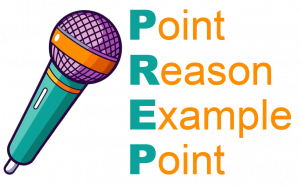Impromptu speeches are a common yet challenging form of public speaking. Unlike prepared speeches, impromptu speeches require you to think on your feet and deliver a coherent, engaging message with little to no preparation. Whether you’re in a business meeting, a classroom, or a social event, mastering the art of impromptu speaking can boost your confidence and communication skills.
In this blog, we’ll break down the key components of impromptu speeches and provide actionable tips to help you deliver them effectively.
What is an Impromptu Speech?
An impromptu speech is a talk delivered without prior preparation or rehearsal. You’re often given a topic or question on the spot and expected to organize your thoughts quickly to deliver a clear and concise message. While this may seem daunting, understanding the structure and techniques of impromptu speaking can make the process much easier.
Key Components of an Impromptu Speech
1. Introduction
The introduction sets the tone for your speech and grabs the audience’s attention. Even in an impromptu setting, a strong opening is crucial.
- Hook: Start with a question, quote, or interesting fact to engage your audience.
- Context: Briefly explain the topic or question you’re addressing.
- Thesis Statement: State your main point or position clearly.
Example: If the topic is “The Importance of Time Management,” you might start with, “Have you ever felt like there just aren’t enough hours in the day? Today, I’ll explain why time management is the key to productivity and how you can master it.”
2. Body
The body of your speech is where you present your main ideas and supporting points. Since you’re speaking impromptu, keep it simple and structured.
- Main Points: Limit yourself to 2-3 key ideas to avoid overwhelming your audience.
- Supporting Evidence: Use examples, anecdotes, or statistics to back up your points.
- Transitions: Use phrases like “Moving on to my next point” or “Another important aspect is” to guide your audience through your speech.
Example: For the time management topic, your main points could be:
- Time management reduces stress.
- It improves productivity.
- It helps achieve long-term goals.
3. Conclusion
The conclusion wraps up your speech and leaves a lasting impression.
- Summarize: Briefly recap your main points.
- Call to Action: End with a thought-provoking statement, question, or suggestion.
- Closing Statement: Finish with a strong, memorable line.
Example: “In conclusion, mastering time management can transform your life by reducing stress, boosting productivity, and helping you achieve your goals. So, what’s one step you can take today to better manage your time?”
Tips for Delivering an Impromptu Speech Effectively
1. Stay Calm and Confident
Nervousness is natural, but staying calm helps you think clearly. Take a deep breath before you start, and remember that the audience is rooting for you.

2. Use the PREP Method
The PREP method is a simple framework for organizing your thoughts quickly:
- Point: State your main point.
- Reason: Explain why your point is valid.
- Example: Provide an example or anecdote.
- Point: Restate your main point to reinforce it.
Example: “Time management is essential (Point) because it helps you accomplish more in less time (Reason). For instance, I used to struggle with deadlines until I started prioritizing tasks (Example). That’s why time management is so important (Point).”
3. Keep It Simple
Avoid overcomplicating your speech. Stick to a few clear ideas and use simple language to ensure your audience understands your message.
4. Practice Active Listening
If your speech is in response to a question or topic, listen carefully to ensure you address it directly. Paraphrase the question if needed to confirm your understanding.

5. Use Personal Stories
Personal anecdotes are relatable and easy to recall, even in an impromptu setting. They also make your speech more engaging and authentic.
6. Maintain Good Body Language
- Eye Contact: Connect with your audience by making eye contact.
- Posture: Stand tall and avoid fidgeting.
- Gestures: Use natural hand gestures to emphasize key points.
7. Embrace Pauses
Pauses are powerful. They give you time to think and allow your audience to absorb your message. Don’t be afraid of short silences.
8. Practice Regularly
The more you practice impromptu speaking, the better you’ll become. Try practicing with random topics or questions at home, or join a group like Toastmasters to hone your skills.
Common Mistakes to Avoid
- Rambling: Stick to your main points and avoid going off-topic.
- Overthinking: Trust your instincts and don’t overanalyze your words.
- Apologizing: Avoid saying things like “I’m not prepared” or “I don’t know much about this.” It undermines your credibility.
- Speaking Too Fast: Slow down to ensure clarity and give yourself time to think.
How to Prepare for Impromptu Speaking (Even When You Can’t Prepare)
While impromptu speeches are unplanned, there are ways to prepare yourself for success:
- Stay Informed: Keep up with current events and trends to have a wealth of knowledge to draw from.
- Practice Frameworks: Familiarize yourself with structures like PREP, STAR (Situation, Task, Action, Result), or Past-Present-Future.
- Think on Your Feet: Engage in activities like debates or brainstorming sessions to improve your quick-thinking skills.
Final Thoughts
Impromptu speeches may seem intimidating, but they’re an excellent opportunity to showcase your communication skills and creativity. By understanding the key components and practicing regularly, you can deliver impromptu speeches with confidence and clarity.
Remember, the goal isn’t perfection—it’s effective communication. So, the next time you’re asked to speak on the spot, take a deep breath, organize your thoughts, and let your ideas shine.
Want to improve your public speaking skills? Check out resources like Toastmasters International or practice with friends and colleagues. With time and practice, you’ll become a master of impromptu speaking!
























